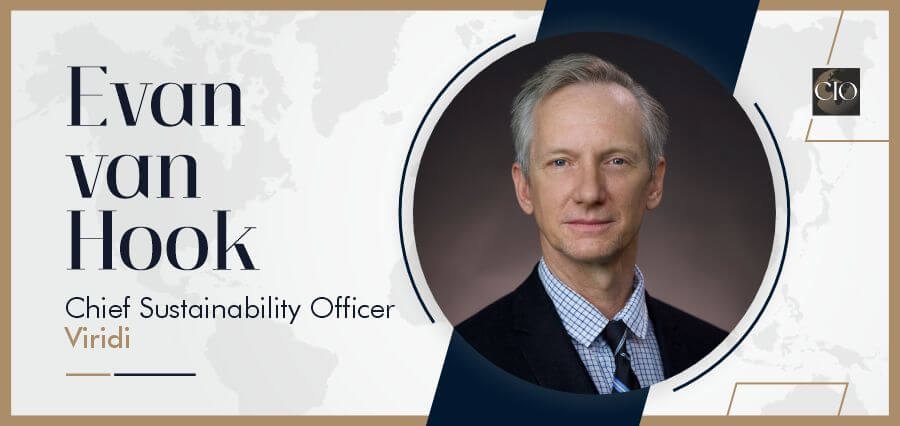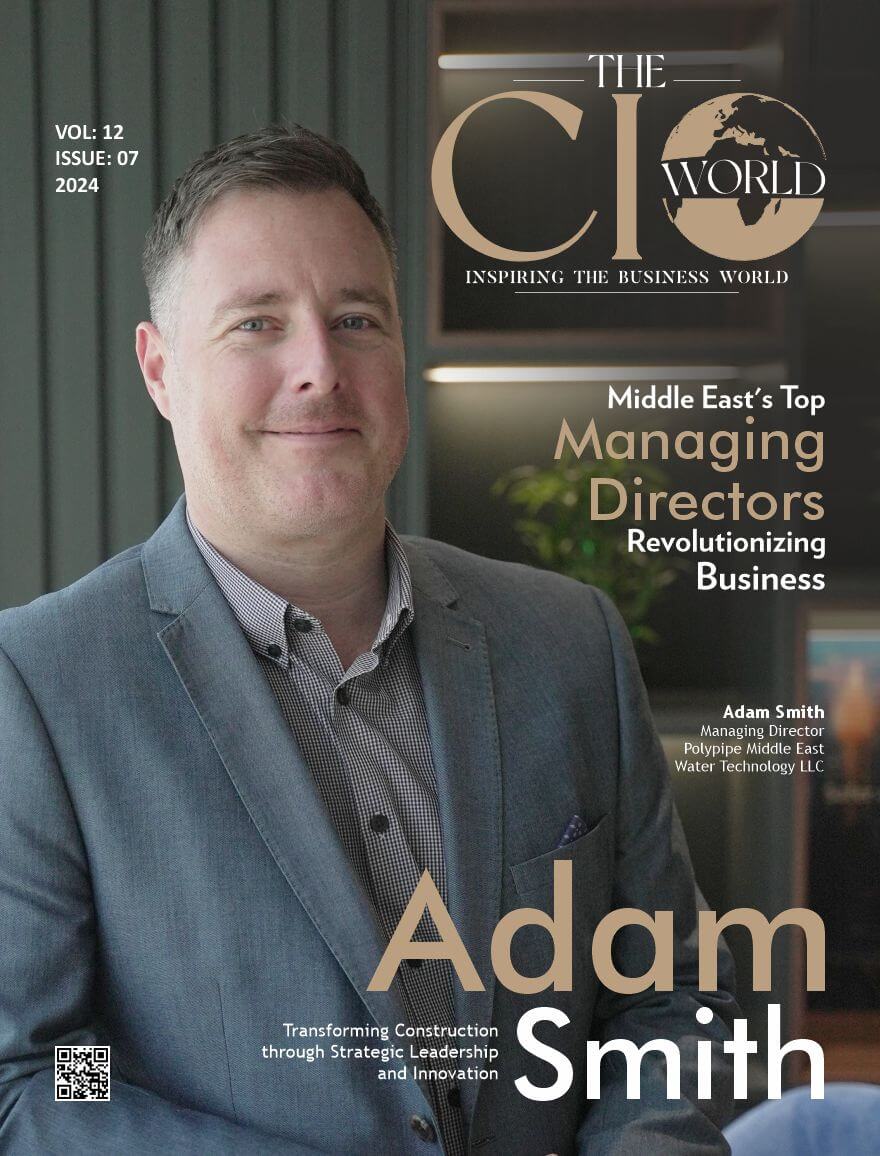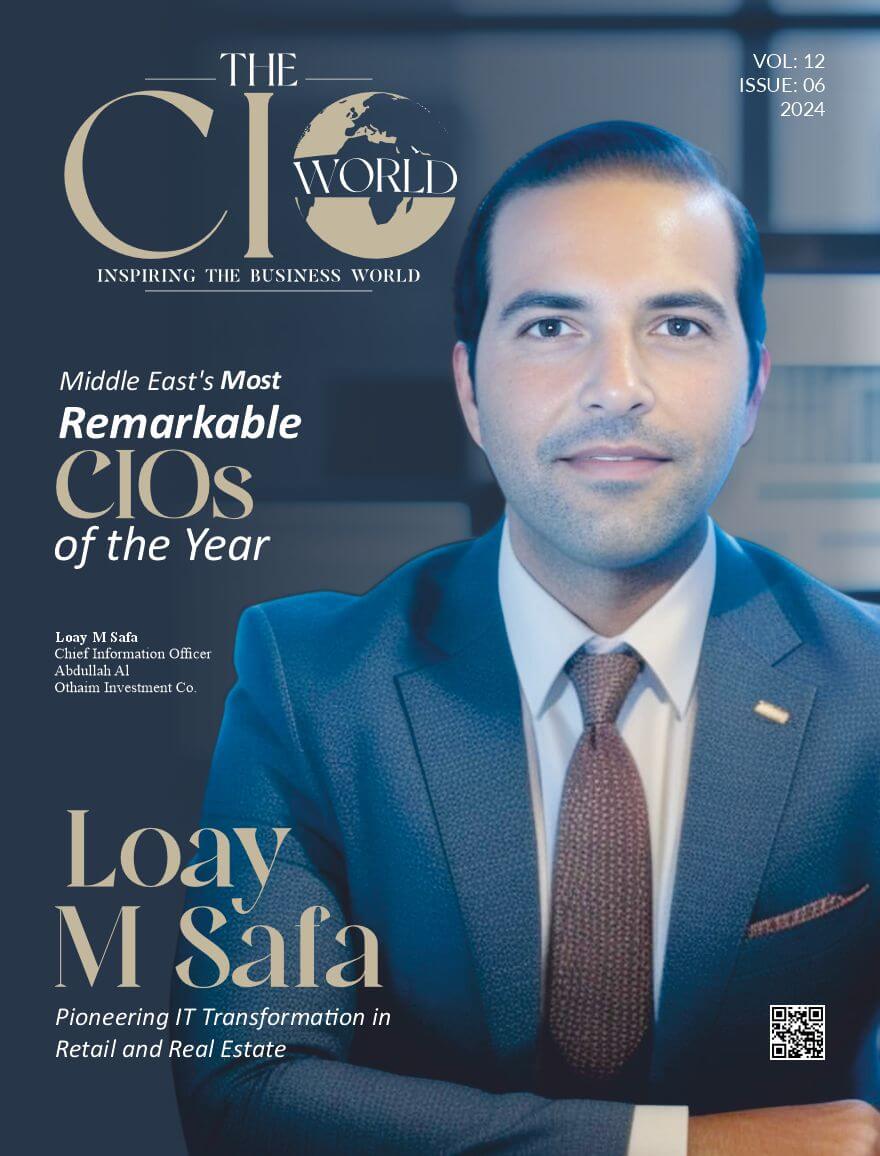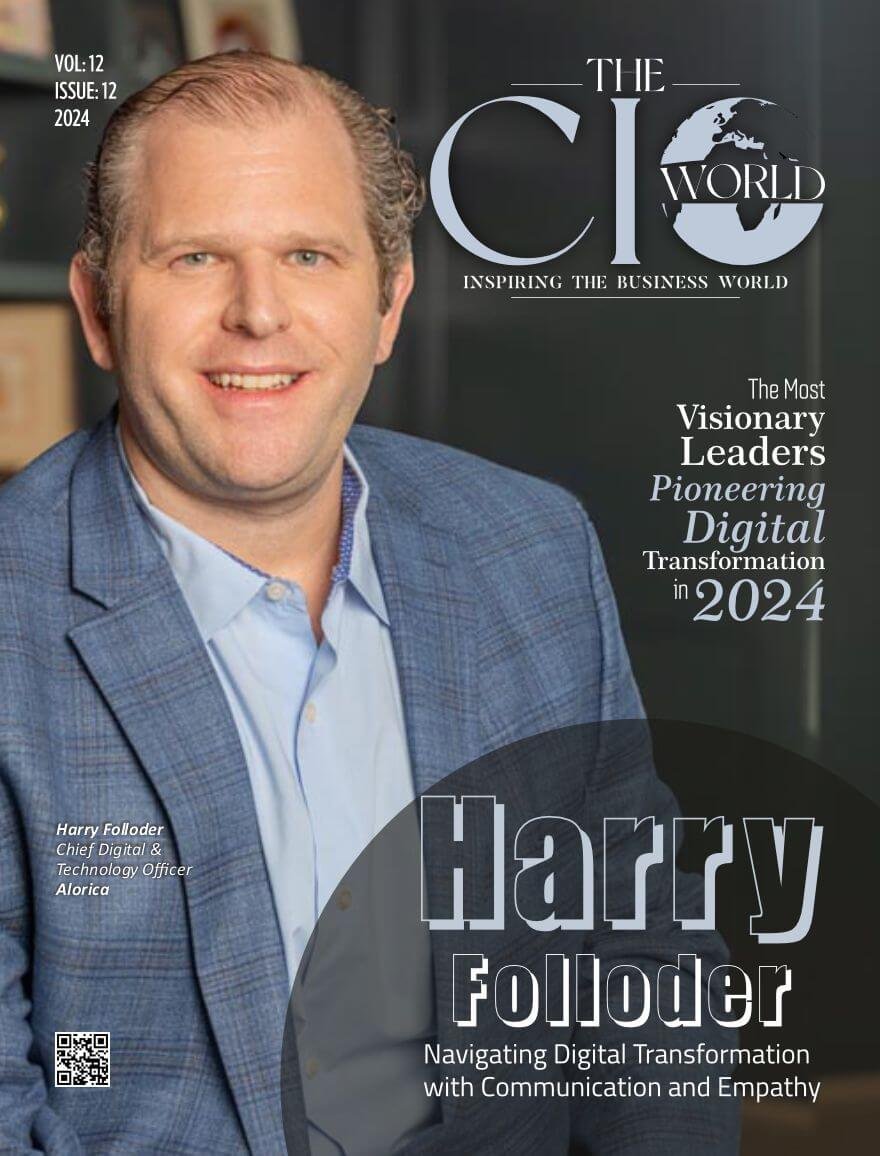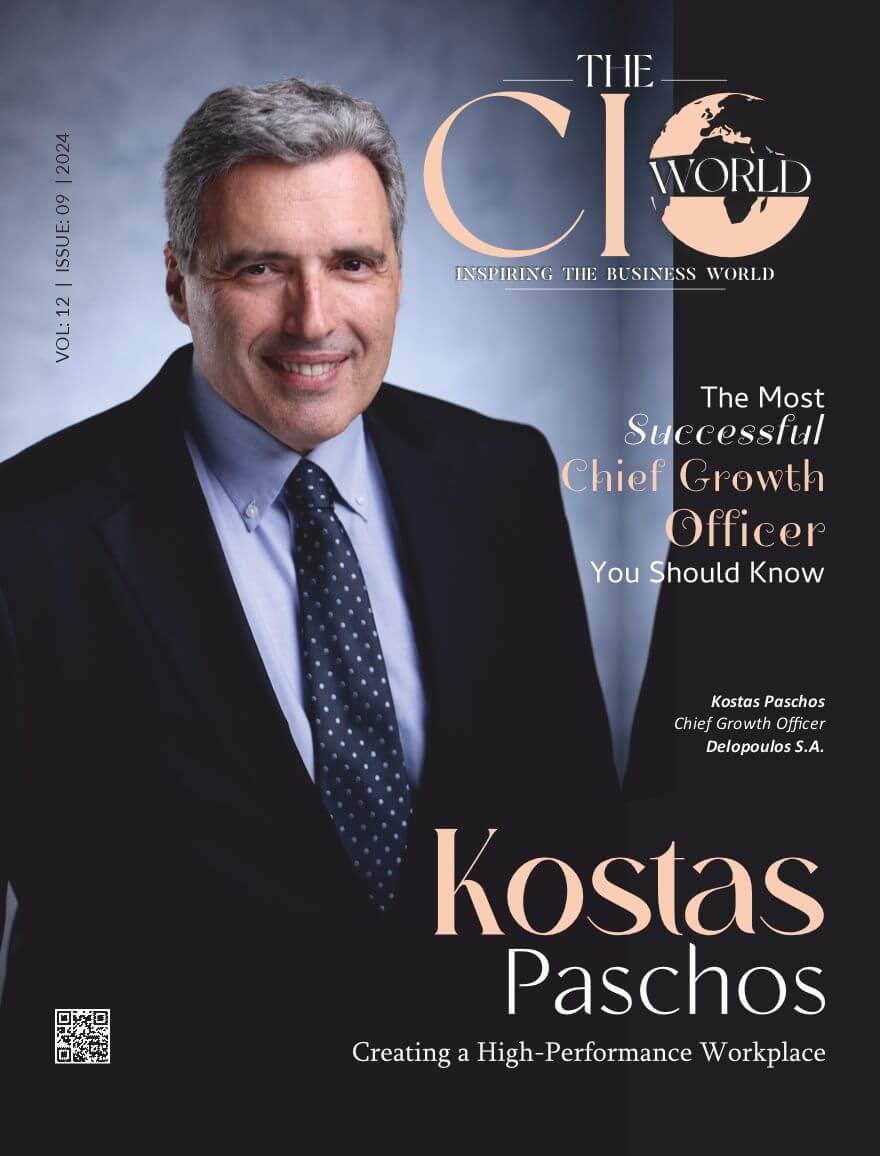A 360-Degree Perspective on a Career Shaping Sustainable Futures!
How can we pave the way for a sustainable future while still meeting the demands of a rapidly growing global economy? This burning question has been at the forefront of discussions as the world grapples with the urgent need to address climate change. In search of answers, we turn our spotlight on Evan van Hook, a seasoned expert in sustainability, and the company he now leads – Viridi.
With a distinguished career that spans environmental law, academia, and two decades at the helm of sustainability efforts for Honeywell International, Evan van Hook brings a wealth of experience to his current role as Chief Sustainability Officer.
Van Hook’s commitment to sustainability is evident in his impressive track record. From pioneering environmental law at a prestigious law firm and educating the next generation at Columbia to spearheading sustainability projects at Honeywell, where he successfully decarbonized operations by over 90%, his legacy precedes him. Now, he has set his sights on Viridi, a company poised to revolutionize the energy storage landscape.
At Viridi, Evan van Hook is championing a groundbreaking failsafe battery energy storage system technology. This innovation holds the key to a just energy transition, addressing the critical need for reliable and sustainable energy solutions. With his leadership, Viridi aims to reshape the narrative surrounding energy storage, providing a viable path toward a greener and more sustainable future.
Below are the highlights from the interview!
Can you please brief us about your company and its inception story?
Viridi was founded by Jon Williams, one of the most creative serial innovators I’ve met. Jon is passionate about the just energy transition, and he understood that energy storage was a necessary component. However, the best technology for energy storage, lithium-ion, also posed a risk of thermal runaway with potentially catastrophic results.
So, he made it his mission to make lithium-ion technology safe. He partnered with Dr. JR Linna, a brilliant Ph.D. from MIT who has spent his career on LI technology. After extensive R&D, they developed a BESS system that eliminates the risk of thermal runaway. It has passed all relevant UL and CSA tests, and it has been approved for installation in occupied spaces. To our knowledge, Viridi is the only, or certainly the largest, BESS system that has been approved for this type of use.
How do you engage with stakeholders, both internal and external, to foster a culture of sustainability within the organization?
Viridi’s culture is driven by the founder and CEO, Jon Williams. He has always been a purpose-driven and community-focused individual. Throughout his career, he has used innovation to create sustainable outcomes, and in fact, this year he won a national award at a conference sponsored by the US EPA for the nation’s most sustainable repurposing of a legacy industrial site. It’s also shown by his establishment of Viridi in an abandoned manufacturing facility in the heart of one of the most economically challenged zip codes in New York.
He established a new nonprofit, Green Force, led by a local pastor, that trains community members for jobs at Viridi and provides them with turnkey support to ensure they are successful. These local investments have a multiplier effect, resulting in millions of dollars for the surrounding community. So, it’s part of the ethos at Viridi: our product is key to the sustainable energy transition, and Jon is building a new type of company, one that rolls up its sleeves and gets directly involved in the just transition of the community.
Can you highlight a specific sustainability challenge your organization faced, and what innovative solutions or strategies did you implement to overcome it?
I would have to say that the key challenge Viridi took on was the technology itself. Everyone knows that renewable energy is key to decarbonization, but this energy is intermittent: solar does not generate when the sun is not shining, and wind does not generate when the wind is not blowing. Also, the electricity grid generates excess GHGs because it must accommodate widely fluctuating peak demands, often requiring the firing of more polluting generating plants.
The energy sector accounts for about 75% of global GHGs, so we simply are not going to solve global warming if we can’t manage energy more effectively. Lithium-ion technology has been demonstrated to be the most effective mechanism for managing energy, but it has the risk of thermal runaway.
What metrics or key performance indicators do you prioritize to measure the success of sustainability initiatives, and how do you communicate these achievements to stakeholders?
We are in the process of developing our first sustainability report, but some of our key metrics are the percentage of our employees who graduated from Green Force, which is about 40%, and our retention rate after 6 months, which is about 84%.
We see Green Force as one of the key sustainability measures of the company, and we believe it is unique. We also track our GHGs and are implementing measures to reduce them. While our BESS systems are expected to last more than 15 years, we are already planning with an NGO to ensure that our batteries are responsibly repurposed or recycled at the end of their useful lives.
As a Chief Sustainability Officer, how do you stay informed about emerging trends, technologies, and best practices in the sustainability field?
This is critically important because this is a rapidly changing area. I personally find it very helpful to accept speaking engagements at sustainability conferences. This not only gives tremendous opportunities to learn from others at the conferences, but there are also preparatory meetings where you truly get to know other speakers.
I’ve formed some great relationships with other sustainability experts that I’ve met through speaking engagements. There is no substitute for being able to speak to individuals “in the trenches” managing or thinking about these issues. Of course, I read incessantly, and frankly, I’m also pleasantly surprised by the number of podcasts on sustainability. During all those “down” times like going shopping, commuting, etc., you will usually find me with headphones listening to something about sustainability.
In your experience, what role does collaboration play in advancing sustainability goals, both within the organization and through external partnerships?
If you were to keep score, you’d find that the word “collaboration” came up more than any other in sustainability discussions lately. Sustainability is about re-thinking systems, both technological and social. No one company or individual has complete answers in this area; all solutions must be deployed within ecosystems, and the entire ecosystem must evolve to achieve different results.
How do you ensure that sustainability efforts align with the values and expectations of your organization’s employees and customers?
As indicated earlier, Green Force is a unique feature of Viridi’s makeup. 100% of the Viridi workforce has access to Green Force support, and this has a significant impact on ensuring our employees are aligned around a common vision.
There is consensus that battery storage is a core necessity of the energy transition, and Viridi is making battery storage possible in those areas where safety is critical. Failsafe battery storage is what we do, so there’s not a lot of room for misalignment with our stakeholders’ objectives.
What do you see as the most significant challenges and opportunities in the field of sustainability, and how do you plan to address them in your role?
As indicated, failsafe energy storage is one of the central challenges in sustainability, and that is precisely what Viridi’s expert team is focused on every day. So just driving toward that core objective is very fulfilling. Another key challenge in sustainability has always been and will continue to be acquiring, managing, and acting on the right data. One sees this in virtually every sustainability discussion. Viridi is playing its part in this area by incorporating into our BESS one of the most sophisticated Internet of Things (IoT) systems in the market.
Our IOT can collect every possible parameter around BESS functioning, energy usage, connectivity to building management systems and back to the utilities, etc. so the BESS can perform at its peak, and it can help create an energy ecosystem that minimizes emissions and maximizes efficiency and resilience. We are going to continue to see strides in obtaining and managing sustainability data, and the Viridi IOT will be a vital part of that.

